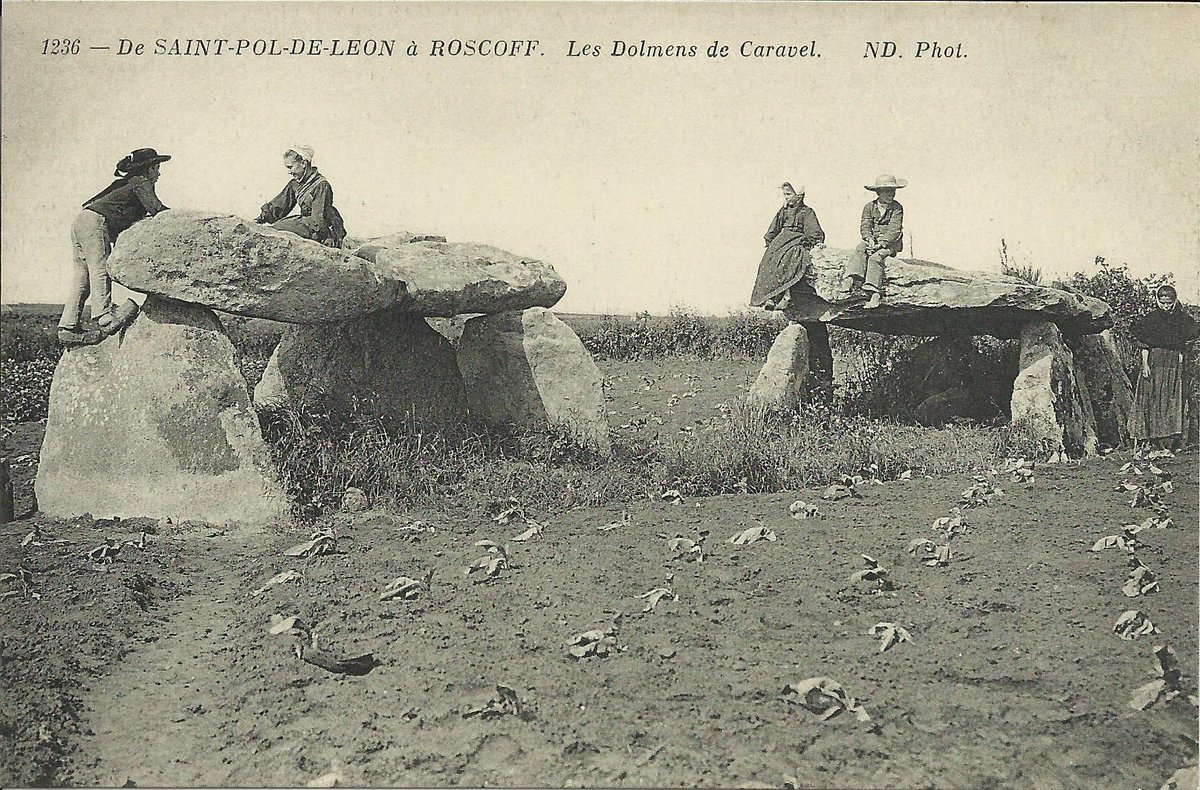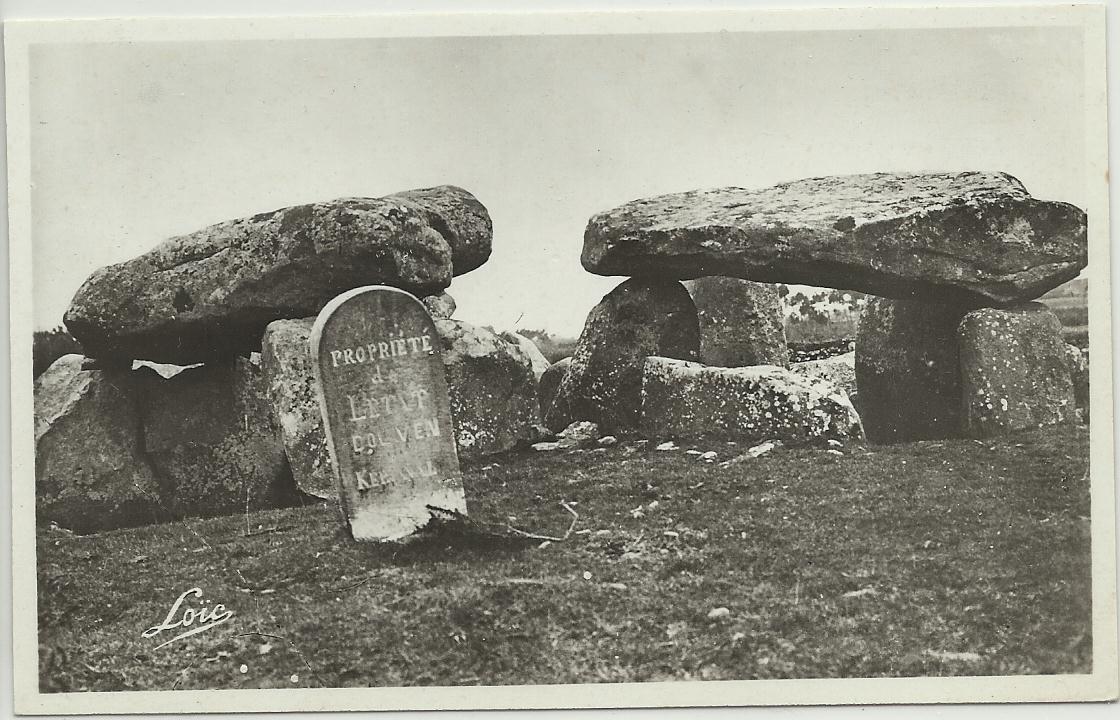
Frenchpostcardsofmegaliths
@PhilWat09037421
Ex curator of Egyptian, Near Eastern and Prehistoric antiquities now publishing my collection of old French postcards of megaliths (see pinned post).
Volumes 1-9 available on Amazon sites at £10.99 each (or local currency equivalent plus any taxes).

This is a general view of some of the 1,000+ menhirs in the alignments of Kermario in Carnac (Morbihan) by Villard in Quimper. It was a popular early card with four editions before 1904, two between 1905-07 and at least another three thereafter up to 1918.

#thicktrunktuesday with some fungal expanding foam! PackwoodNT.
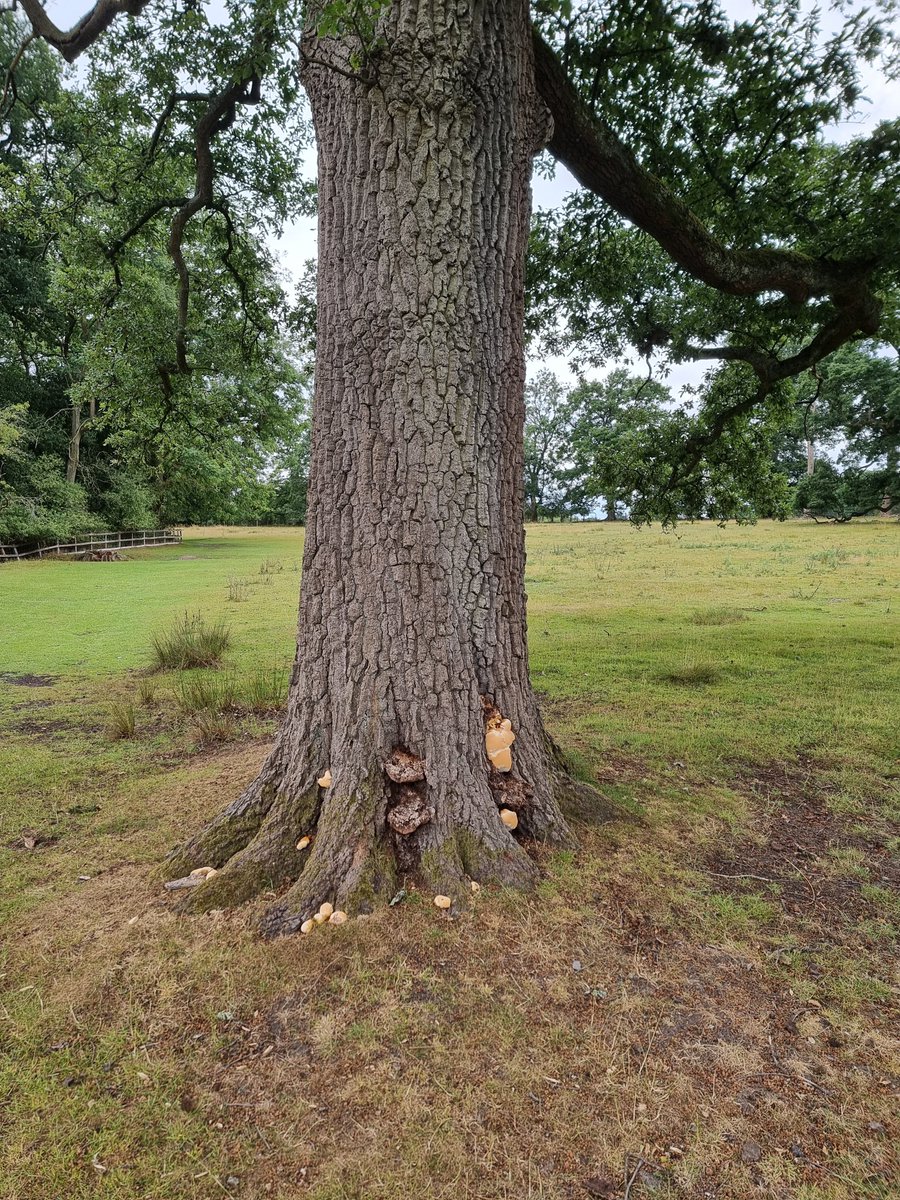
The dolmen near Ponsat in St-Georges-la-Pouge (Creuse) has a massive 4.8x3m capstone resting on seven low orthostats and is generally seen as the best preserved and most imposing one in the département. #TombTuesday.
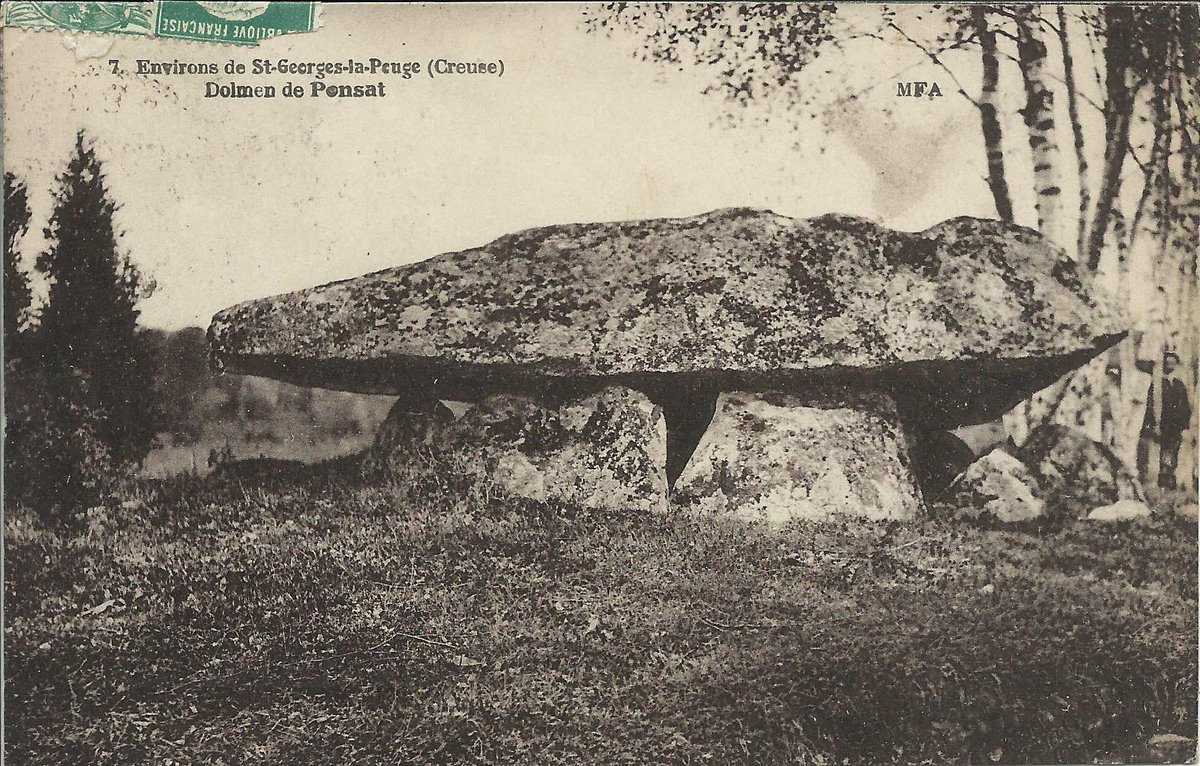
Things are not always what they seem: in 1895 four faux trilith “dolmens” were erected in the forest of Meudon (Hauts-de-Seine) together with a 3.8m tall “menhir” (on the left) from the Bois de Vélizy in Yvelines. They were a popular attraction with visitors from Paris.

The needle shaped menhir of La Pierre Longue de Sale Village in St-Georges-des-Sept-Voies (Maine-et-Loire) is 5.5m tall. In one tradition it was Gargantua’s whetstone which he lost when he bent over to empty sand from his boots. #StandingStoneSunday.
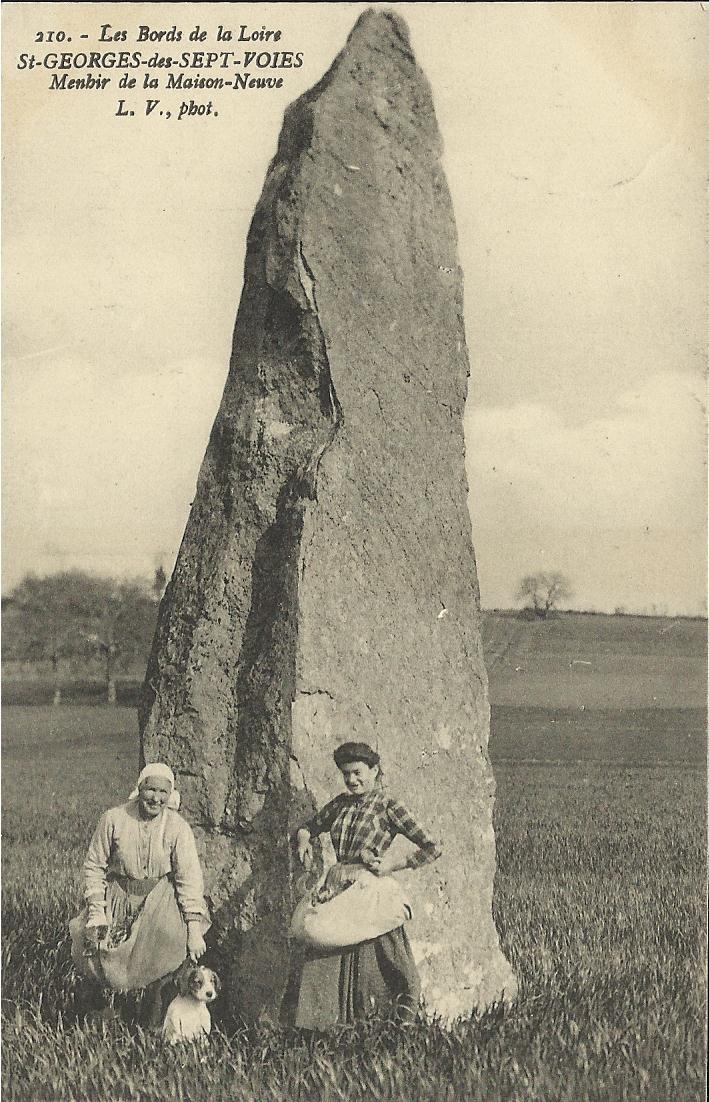
The remains of La Pierre Levée in Bretignolles-sur-Mer (Vendée) can only be classed as a simple dolmen now but were probably once part of a bigger passage grave. Its precariously angled capstone certainly strikes a pose. Card by Le Bihan c. 1910.
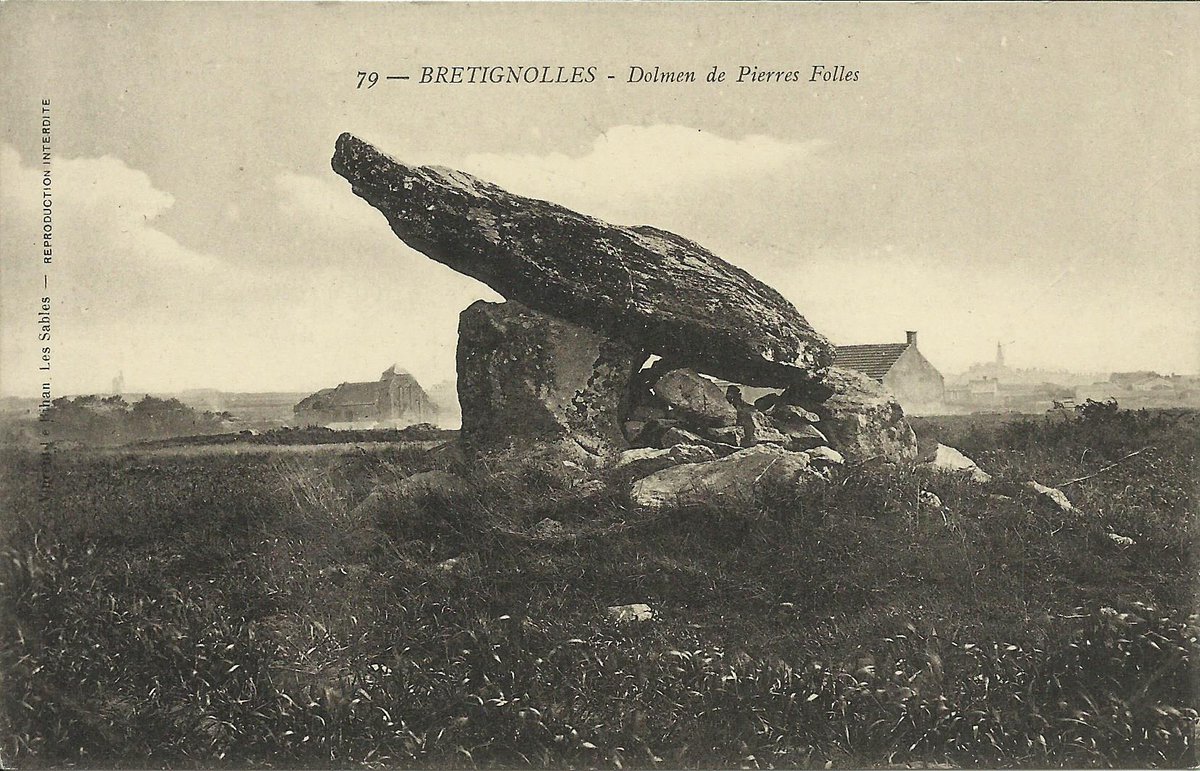
The menhir of La Pierre Longue in Noyal-sous-Bazouges (Ille-et-Vilaine) is 5.1m tall and leans slightly to one side possibly because of the later talus on which here a man sits with his feet in the ditch.
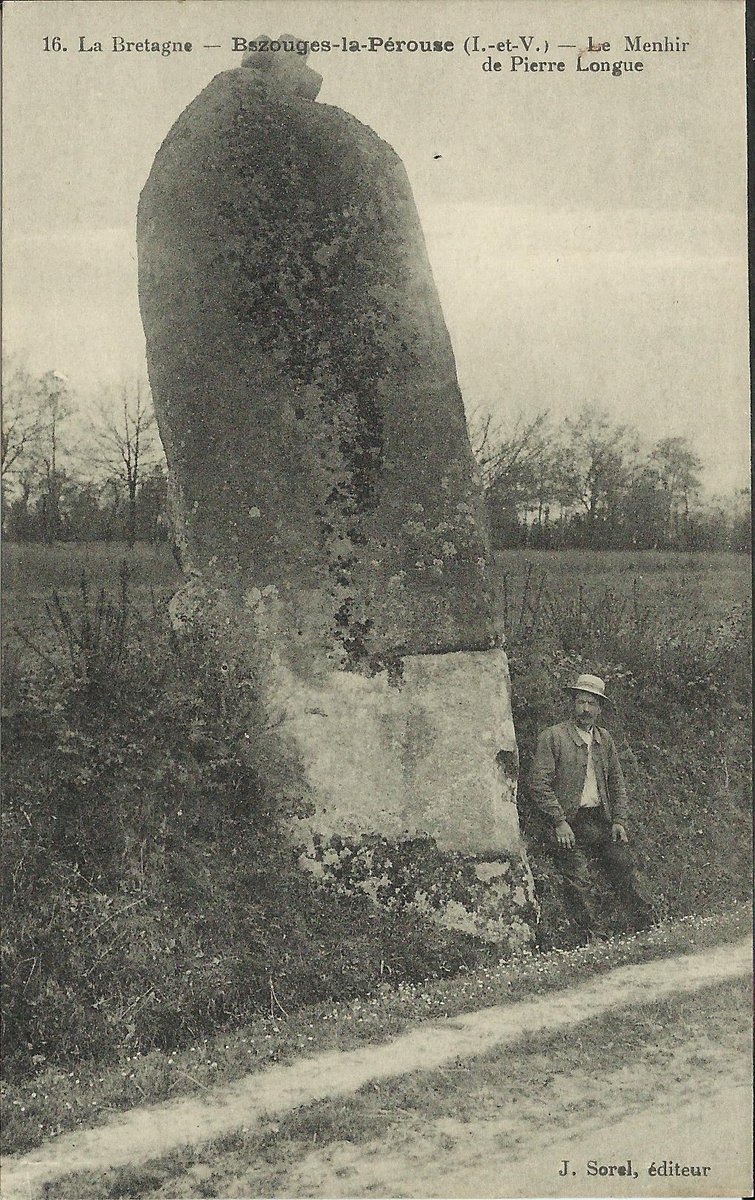
This card by Le Doaré in Châteaulin of the allée couverte of Kerbalannec in Beuzec-Cap-Sizun (Finistère) gives a good idea of the architecture of the tomb and the low angle from which it is taken produces quite a dramatic effect.
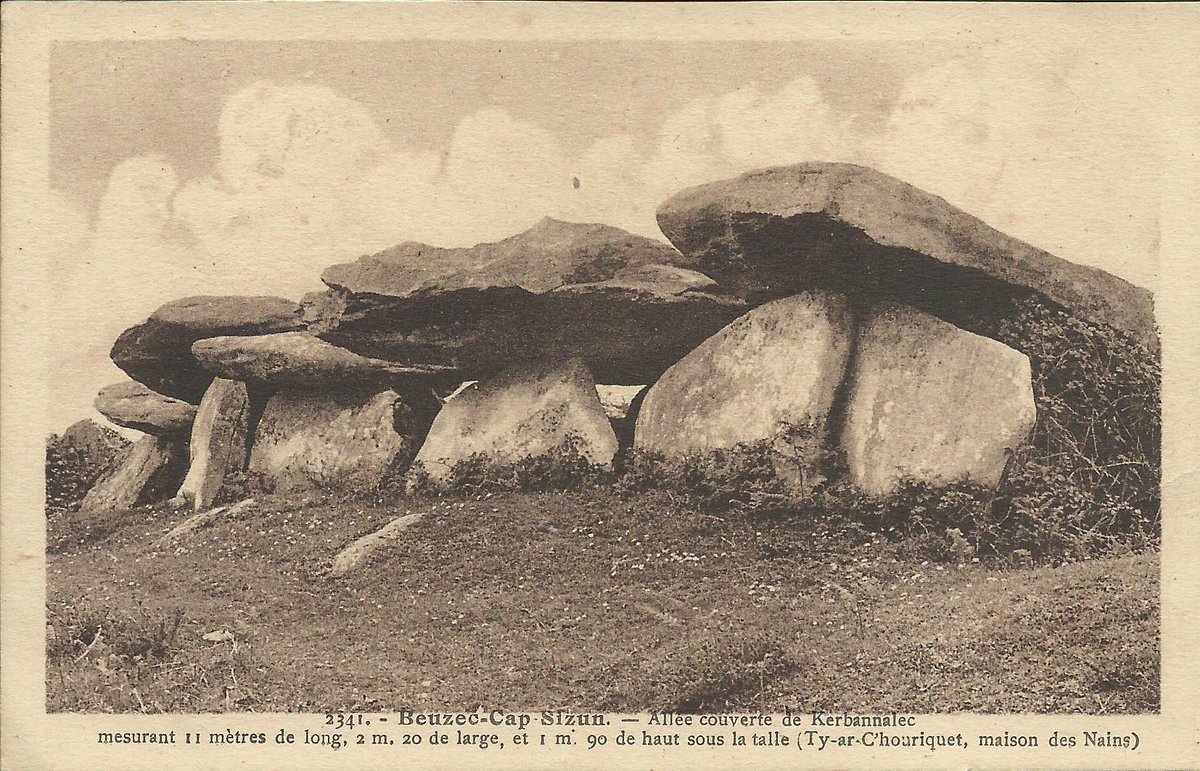
The menhir of Boisker between the villages of Cosquero and La Boulaye in Moustoir-Ac (Morbihan) stands 6.6m above a 1.5m high talus and is one of the tallest menhirs still standing in the département. This card by David in Vannes c. 1905.
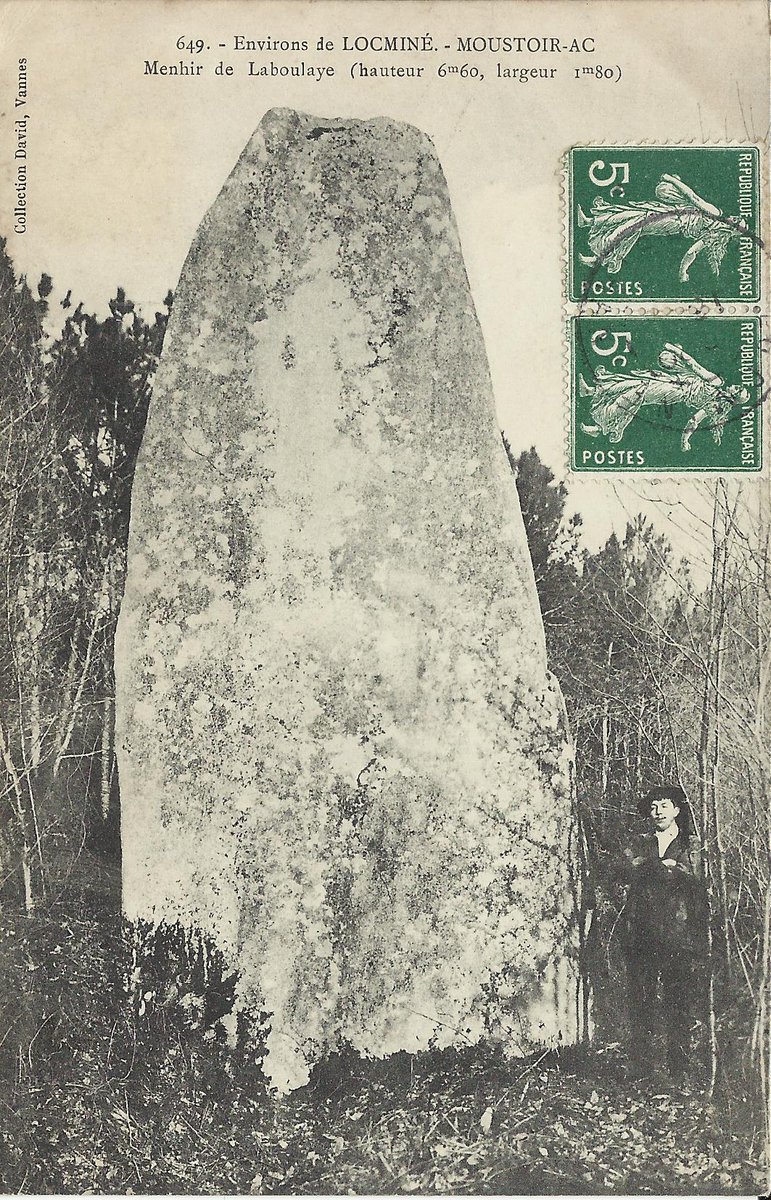
There are 3 passage graves at Mané-Kerioned in Carnac (Morbihan): one in the centre (earliest) on an E-W axis and one on either side of it on a N-S axis all probably eventually covered by a single enlarged cairn. This card by Laurent c.1905 shows the W tomb. #TombTuesday.
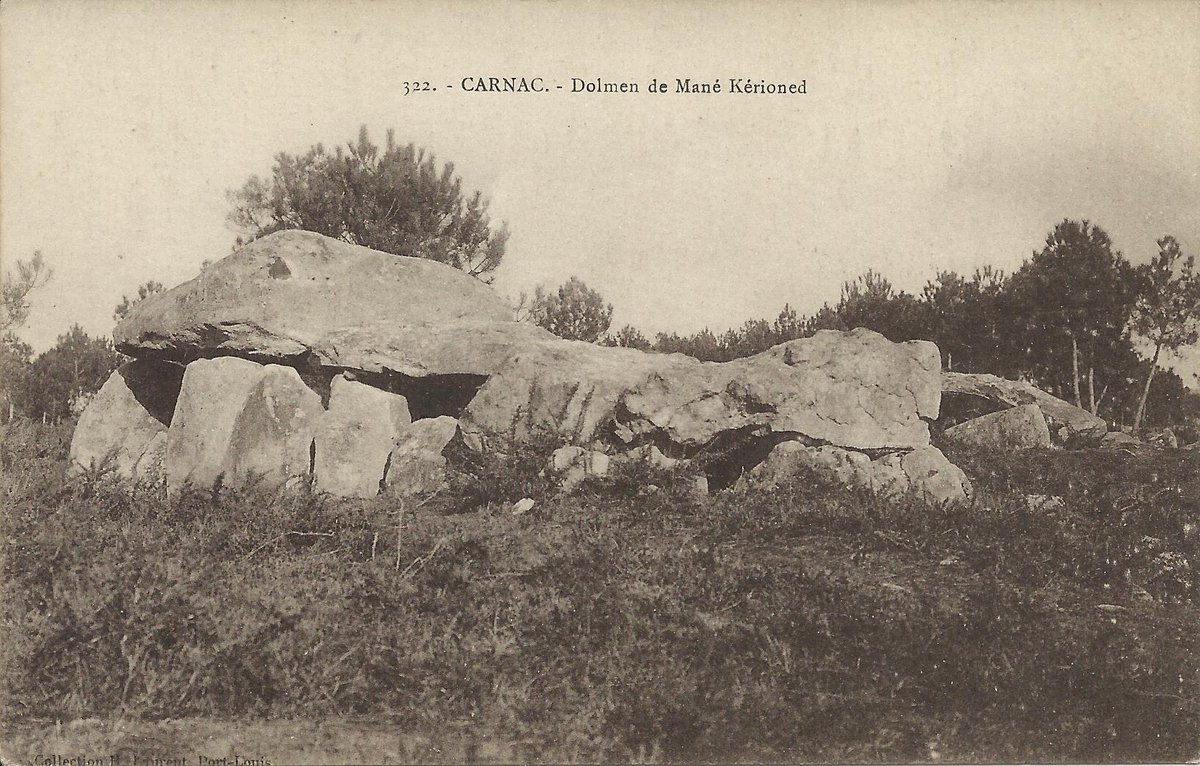
The menhir of Freydefond in St-Nectaire (Puy-de-Dôme) is only 1.65m tall but can be seen from afar due its location. The top was flattened to hold a cross at an unknown date which was knocked off during the Revolution, later replaced and then stolen after 1910.
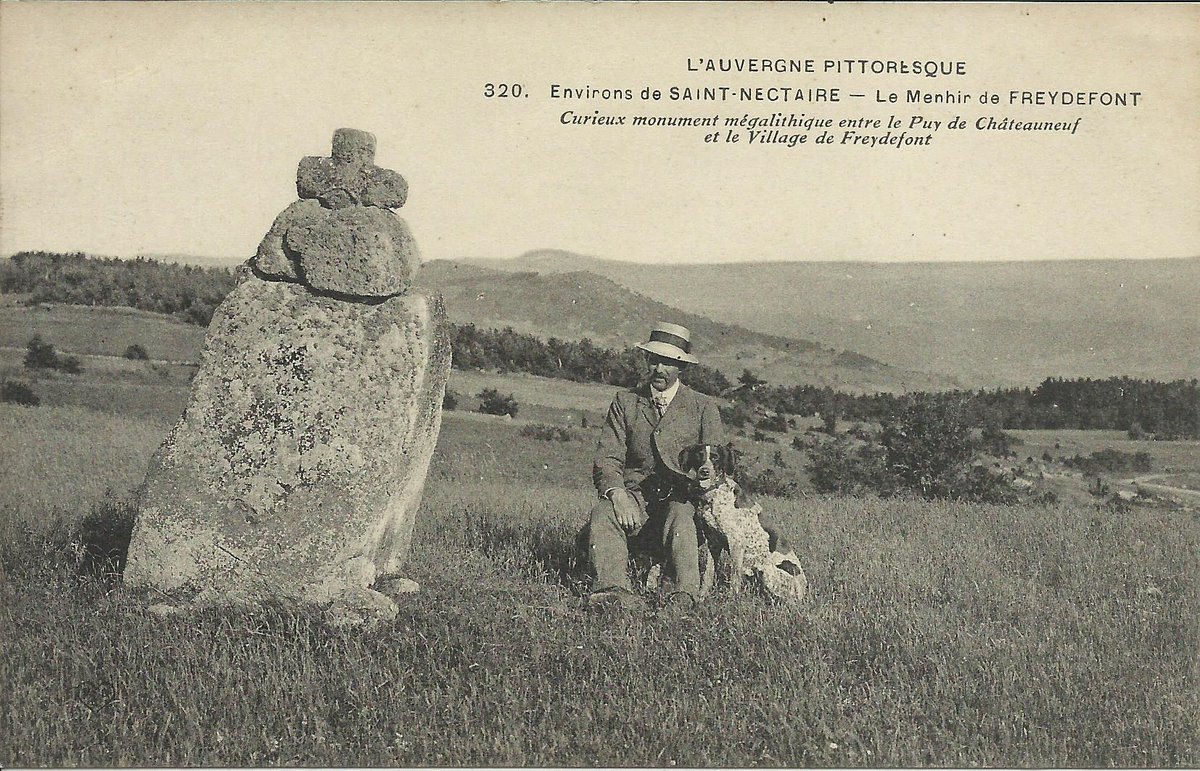
The allée couverte of La Bertinière (aka Grotte des Fées) in La Sauvagère (Orne) is nearly 15m long and has 9 capstones on 18 orthostats. This card by L. Orhant in La Ferté-Macé c. 1918 shows the front section and first 5 capstones.
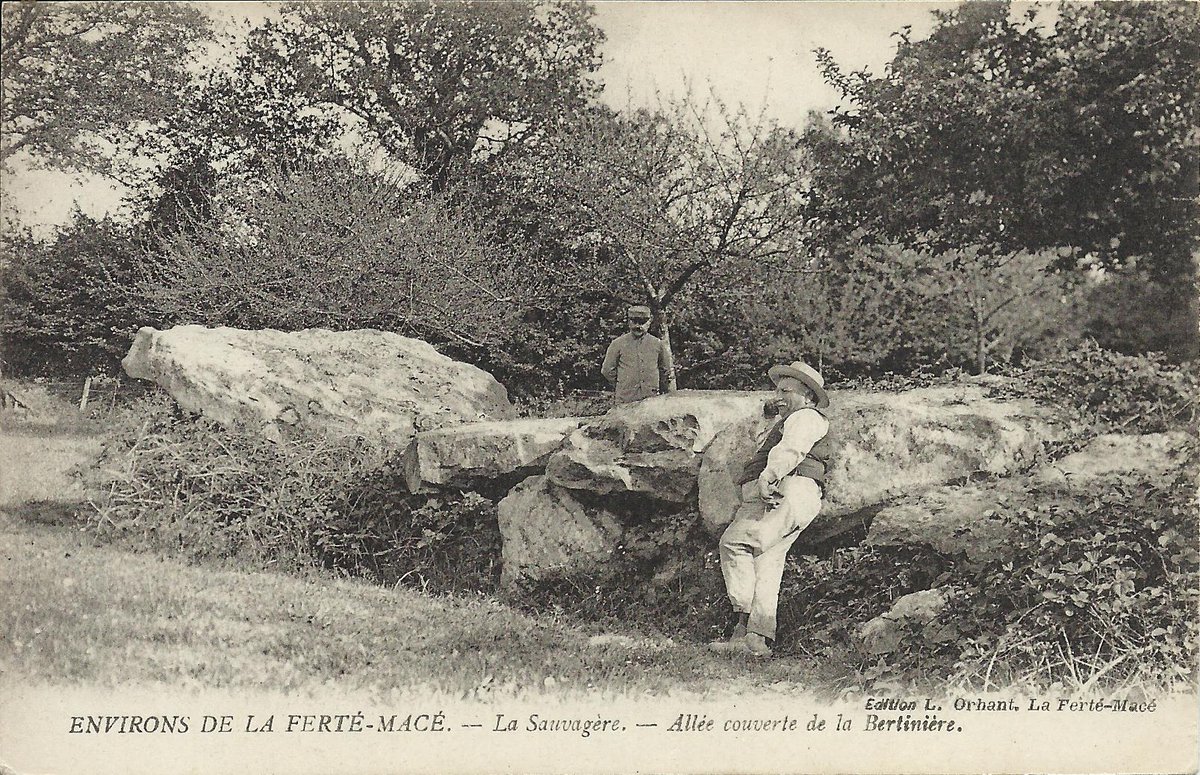
The dolmen of Etiau in Coutures (Maine-et-Loire) is unusual; the sides are formed by two natural boulders to which a 3.5x3m capstone and a terminal slab have been added. Two smaller stones at the front may be from a portal entrance.
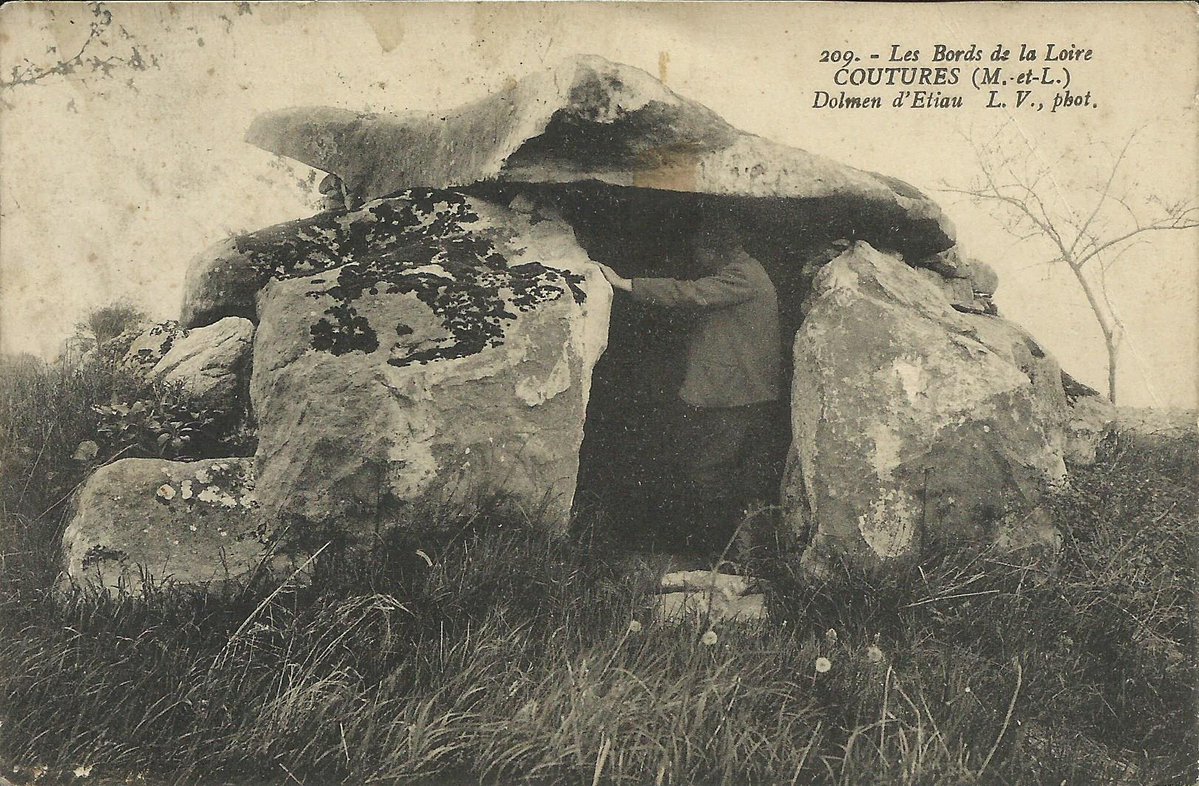
Here now at the menhir in St-Mayeux with Julia for scale. Very busy already and still hours before letour2025 arrives.
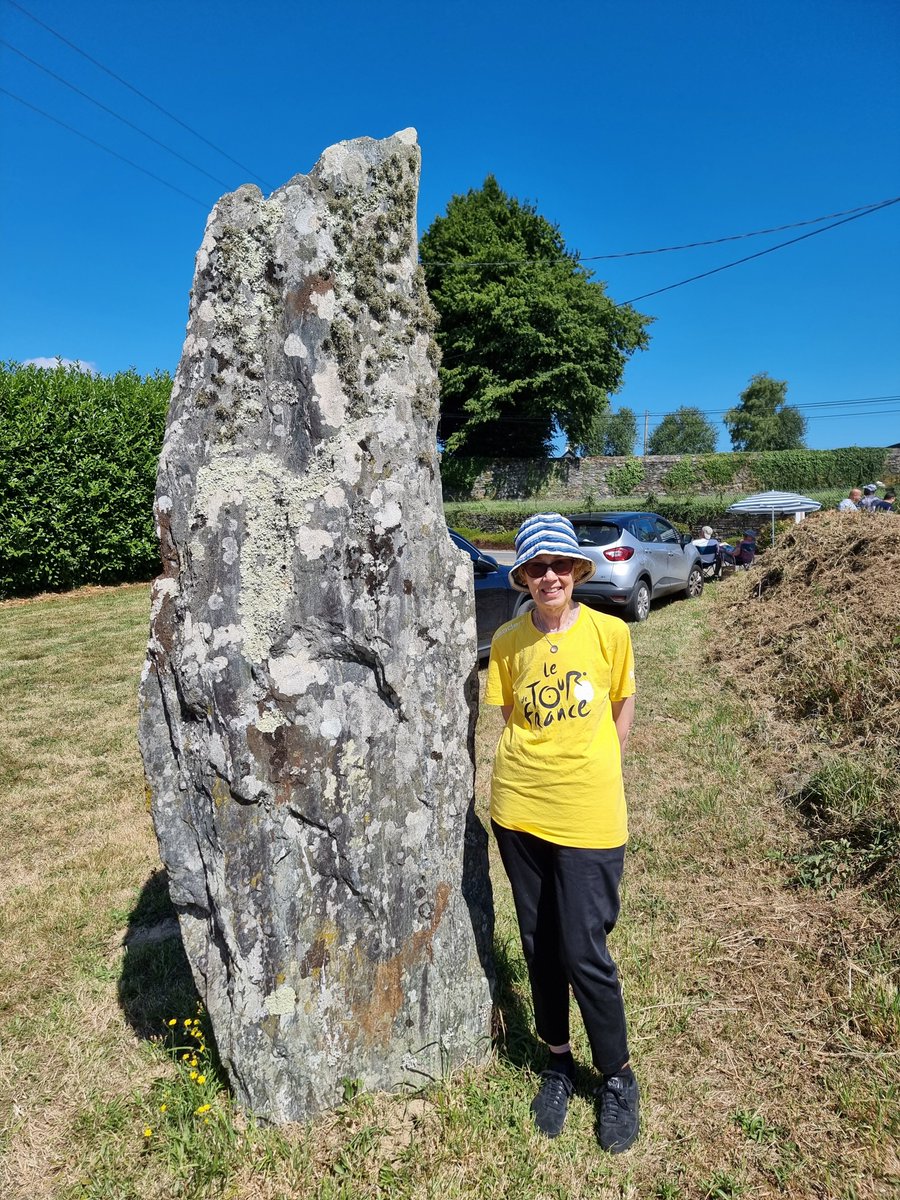
Off to St-Mayeux in Côtes-d’Armor soon for stage 7 of LeTour2025 so today’s post has to be this card by Waron of the 2.7m tall schist menhir du bourg a little way east of the church.
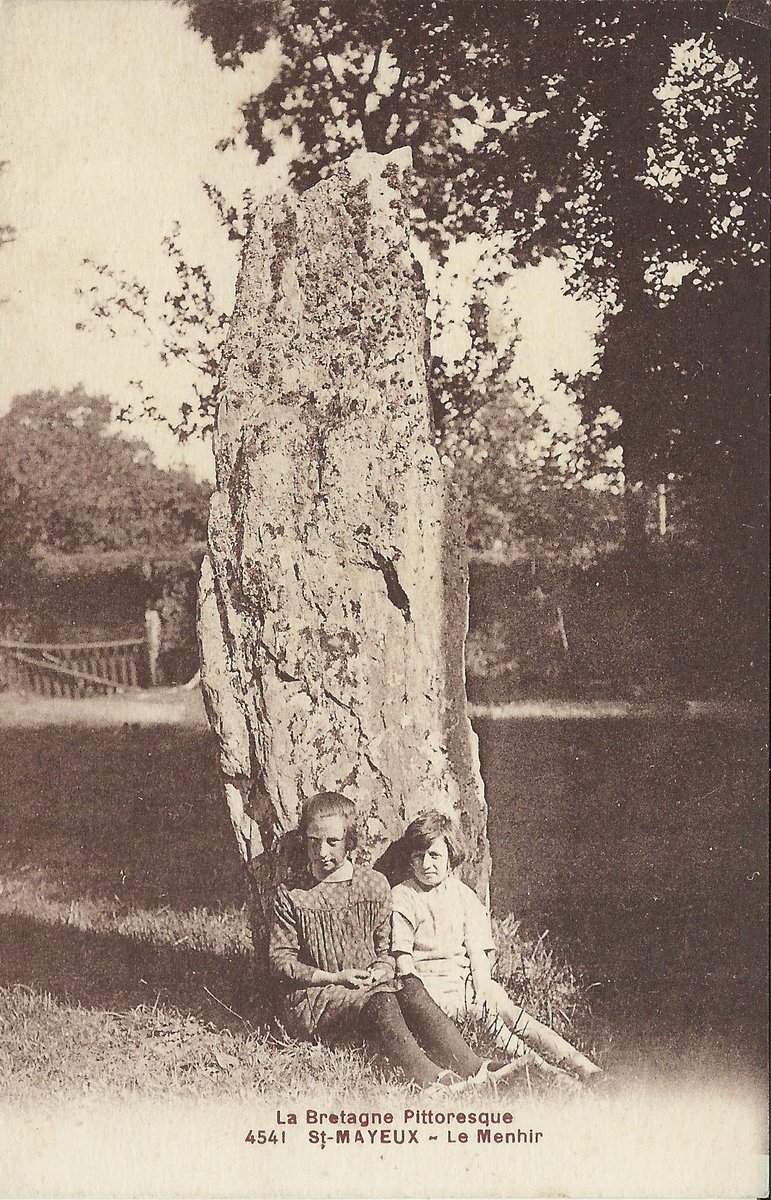
The simple dolmen of La Roche aux Loups in Missillac (Loire-Atlantique) has a 4m long capstone resting at an angle on a taller orthostat on the south and two shorter ones on the north which lean inwards; whether they were built like this or have slipped is unknown.
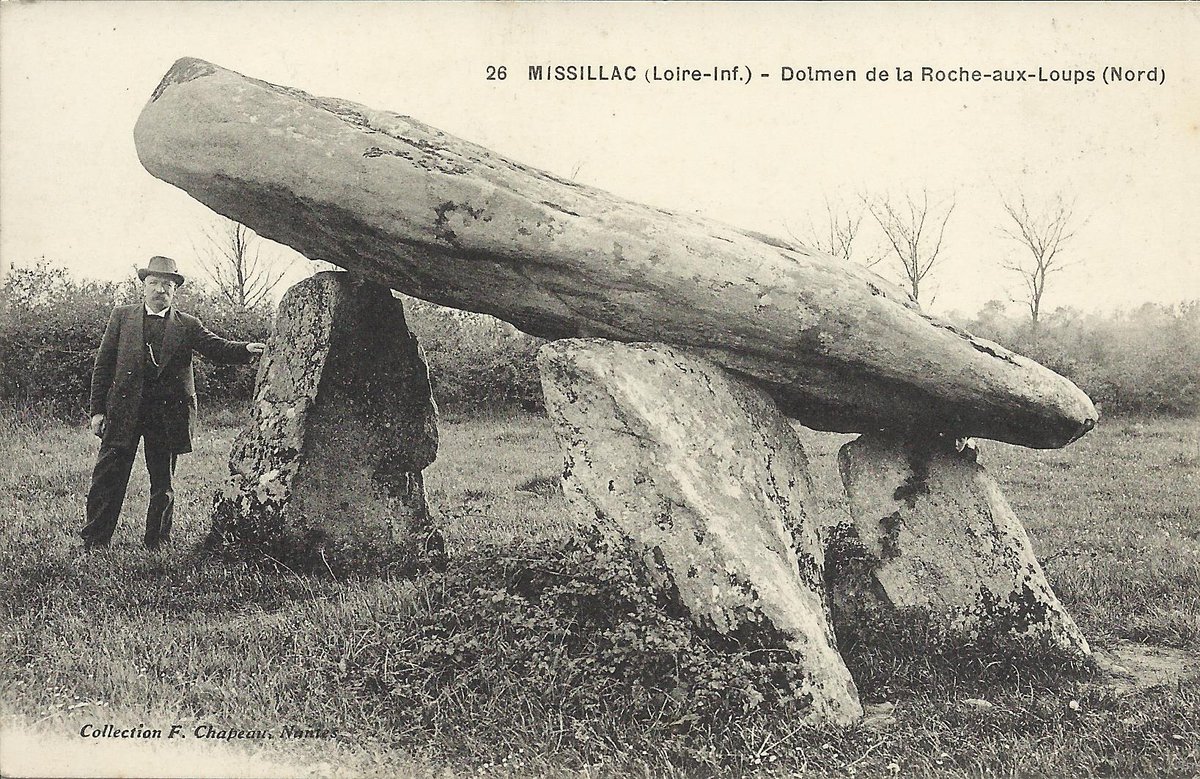
The granite menhir of Caillouan in Plésidy (Côtes-d’Armor) stands a little over 8m tall. A claim that a Gallic chief was buried at one side and a Roman general at the other was considered suspect even by early recorders. This card by Hamon in Guingamp c.1905.
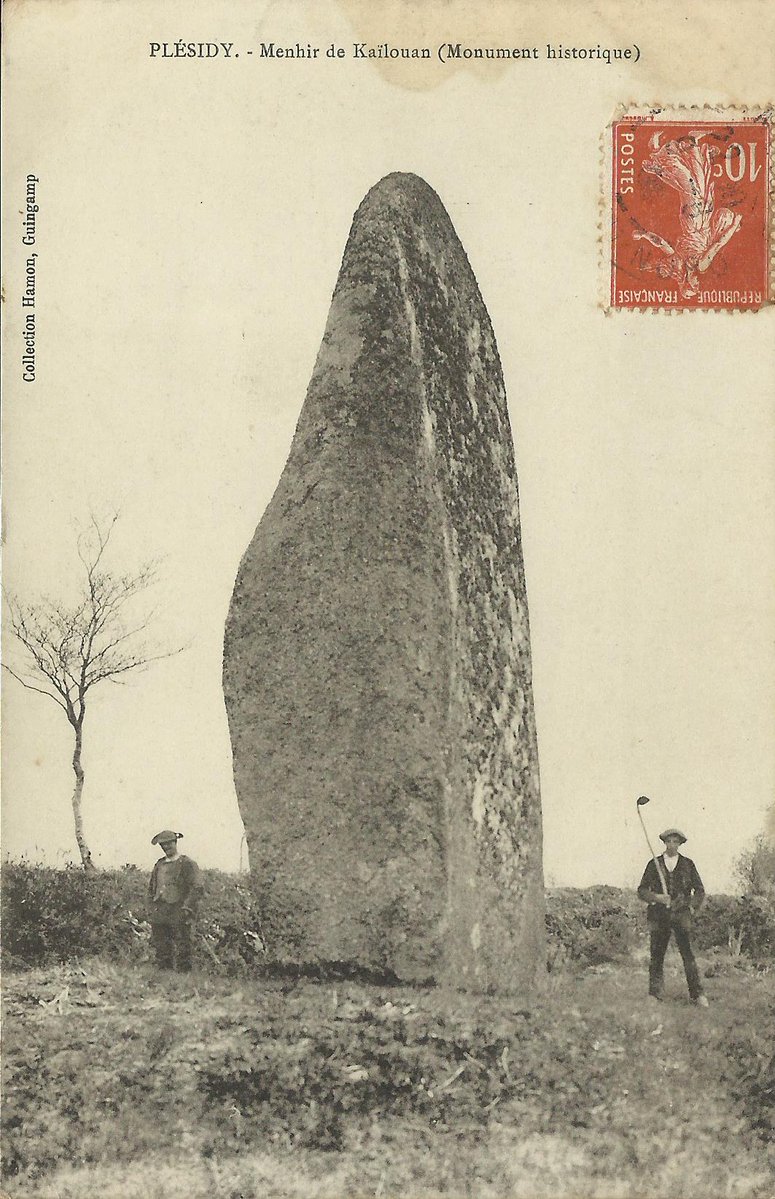
The allée couverte at Keravel in Roscoff (Finistère) had a 20m long chamber and a 3.5m lateral entrance passage. By 1902 it had been so badly robbed that it was described as 3 separate dolmens. By 1944 all of it had gone. #TombTuesday.
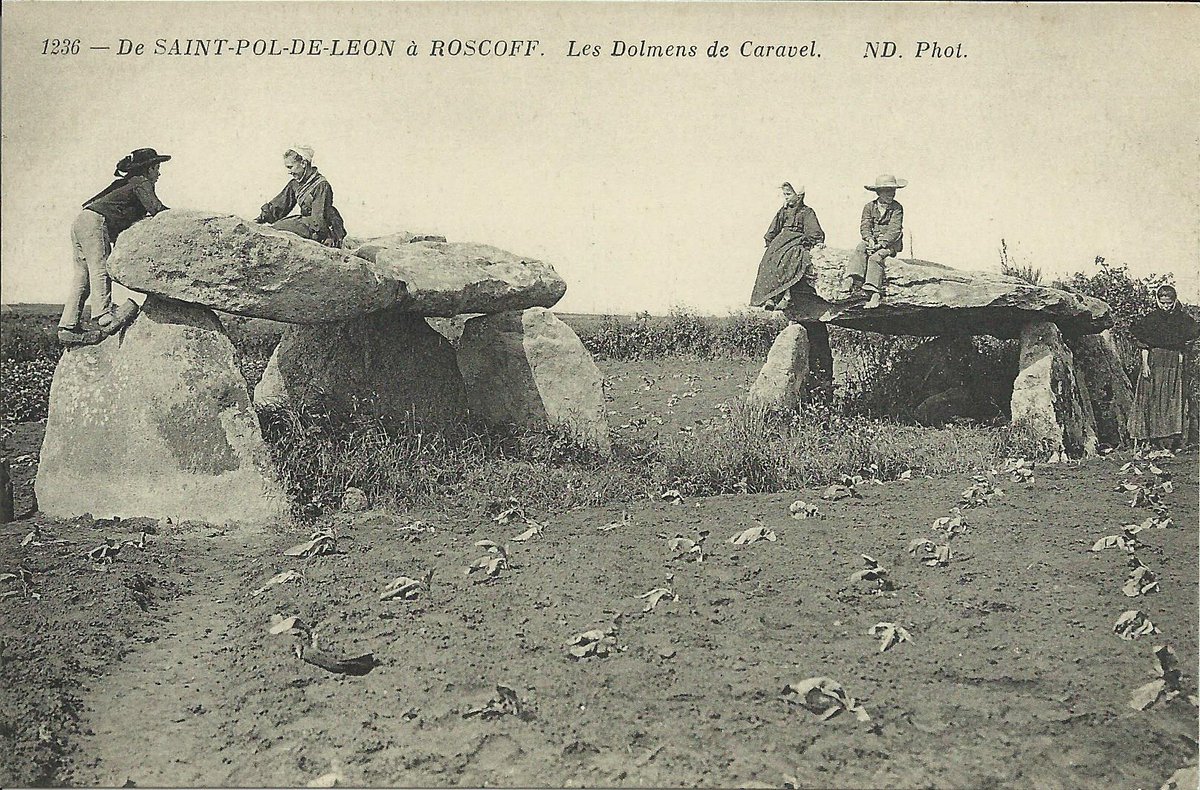
The allée couverte at Keravel in Roscoff (Finistère) had a 20m long chamber and a 3.5m lateral entrance passage. By 1902 it had been so badly robbed that it was described as 3 separate dolmens. By 1944 all of it had gone. #TombTuesday.
